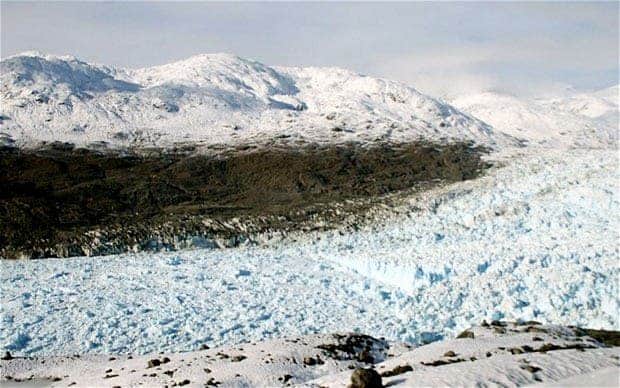According to Chile’s Centre for Scientific Studies (CECs) it seems like an array of glaciers located in the country’s south have shrunk extensively recently. One such glacier, the Jorge Montt, was documented for a whole year by researchers who observed that its rate of shrinkage is the largest in the country, with snout retreating a whopping 1 kilometer during the past year alone.
The glacier which is part of the 5,020 square mile Southern Patagonian Ice Field, the third largest frozen land mass after Antarctica and Greenland, was documented by researchers with the help of 1,445 time-lapse photos, which were pieced together to form a rather grim view. The video was striking even for the researchers, as Andres Rivera, lead glaciologist, confesses he couldn’t picture the scale of the ice shrinkage until two cameras with solar panels to charge the batteries were programmed to shoot four frames a day.
“It was more or less clear that this was one of those retreating most quickly. But we didn’t expect in the year of working with these cameras that it would retreat a kilometer more. That was a surprise,” Rivera said. “This glacier is filled with surprises for us.”
Rivera claims global warming is a big factor to blame for this retreat, however due to the fact that the glacier is placed in the waters of a deep fjord, it’s melting is facilitated. The researchers believe that based on a map from 1898, this glacier has retreated roughly 12 miles (19.5 kilometers) since then.
“Such glaciers typically do retreat in response to warming. But the speed of the retreat is controlled by the ability of icebergs to break off in the fjord, not by the rate of warming,” said Richard Alley, a prominent glaciologist at Penn State University.
A recent study conducted by British and Swedish scientists who analyzed about 350 glaciers in Patagonia, concluded that all but two of the glaciers have receded significantly since the late 1800s and have been shrinking at a faster rate during the past three decades.
The time-lapse video of the Jorge Montt glacier massive retreat can be seen below.
The study was published in a recent edition of the journal Nature Geoscience.









